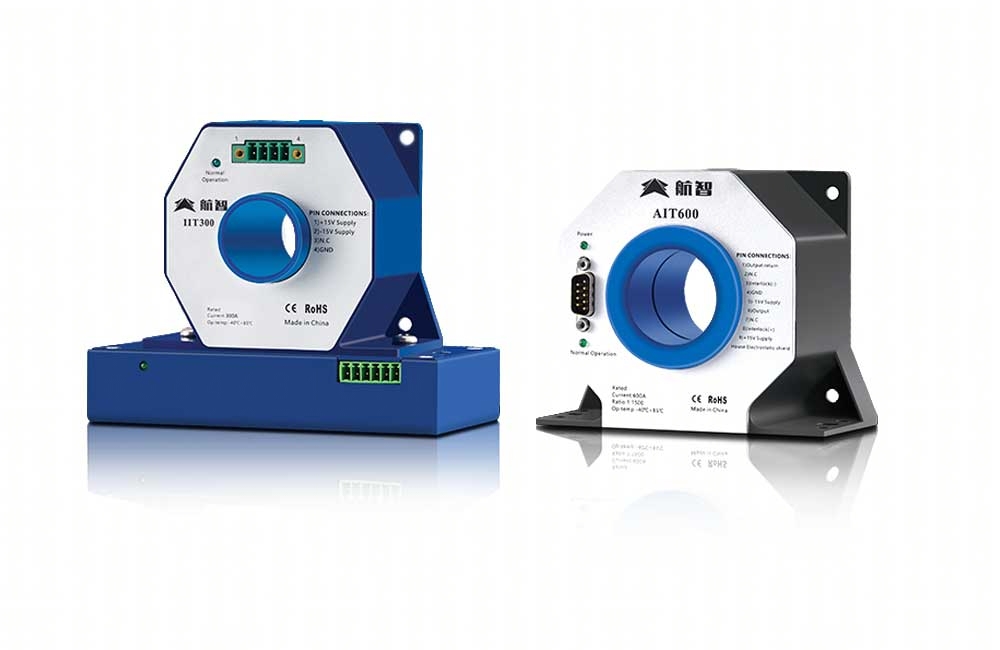How to Select Current Sensors for Industrial and Laboratory

Current sensors play a vital role in both industrial and laboratory environments, ensuring the safe, accurate, and efficient operation of electrical systems by measuring current. While the basic principles of current sensing remain the same, the type of sensor used can vary significantly depending on the environment and specific requirements. This article explores the differences between industrial and laboratory current sensors and provides guidance for selecting the right sensor for industrial applications.
What Are Industrial Current Sensors?
Industrial current sensors are devices specifically designed to monitor, measure, and control various physical parameters in industrial environments. These sensors are crucial in industries such as manufacturing, renewable energy production, automotive automation systems, and process control. Key applications for industrial current sensors include motor control, power management, overload protection, and energy monitoring.
The purpose of industrial current sensors is to provide real-time data within industrial production or specific environments. This data is often used to trigger automation systems, generate alarms, or enable data logging for further analysis. These sensors help detect anomalies, optimize processes, and ensure smooth system operation.
How Do Industrial Current Sensors Work?
Industrial sensors typically operate based on electromagnetic induction or the Hall effect principle. When current flows through a conductor, it generates a corresponding magnetic field. The sensor measures current by detecting changes in this magnetic field. Industrial-grade current sensors typically measure higher currents and employ a closed-loop design with feedback mechanisms to ensure accurate and stable measurements. They also offer strong immunity to interference, ensuring reliable performance even in harsh environments.
What Are Laboratory Current Sensors?
Laboratory current sensors are commonly used in research labs, educational institutions, product development, or precision measurement environments. Their purpose is to accurately measure low or high currents, requiring high test accuracy. Laboratory current sensors must provide high accuracy.
Compared to industrial sensors, these sensors are typically smaller and more accurate. They are commonly used to measure currents ranging from microamperes to amperes in experiments or scientific research. Laboratory current sensors also offer higher resolution, lower noise interference, and higher sensitivity, ensuring detailed and accurate measurements.
How Do Laboratory Current Sensors Work?
Laboratory current sensors operate on similar principles to industrial sensors but often employ more advanced technologies to enhance accuracy and sensitivity. For example, some laboratory sensors may utilize zero-flux technology or superconducting quantum interference devices to achieve extremely high current resolution. Furthermore, laboratory sensors typically feature a wider frequency range and lower noise levels to meet the stringent data accuracy requirements of scientific research.
Key Differences Between Industrial and Laboratory Current Sensors
Both industrial and laboratory current sensors measure current, but they differ significantly in design, performance, and application scenarios. These differences primarily manifest in the following areas:
Accuracy, Measurement Range and Performance
Industrial Current Sensors
While industrial current sensors require higher accuracy, they are not as accurate as laboratory current sensors. Industrial current sensors typically require moderate accuracy, such as 0.5% to 2%. Industrial-grade current sensors support wide measurement ranges (e.g., kA-level currents) or dynamic load changes.
Industrial current sensors prioritize long-term stability and reliability, striking a balance between accuracy and practicality.
Laboratory Current Sensors
Laboratory current sensors require even higher accuracy, even down to the ppm level. These sensors offer high precision and resolution, enabling them to detect even small changes in current. They are suitable for research, education, laboratories, and calibration facilities.
Some laboratory current sensors utilize a narrow range design to achieve high accuracy, sacrificing range for high accuracy.
Functions and Interfaces
Industrial current sensors typically feature standardized outputs, such as 4-20mA and 0-10V, to facilitate integration with PLCs. They also offer fault diagnostics, such as overload alarms and self-test functions, and support remote monitoring.
Laboratory current sensors offer flexible interfaces, such as RS232 and RS485, for connecting to a PC or oscilloscope and can be customized as needed.
Laboratory current sensors offer a variety of functions, typically used for waveform analysis, harmonic measurement, and data analysis. Functionality can also be modified as needed.
Size and Appearance
Due to the need for isolation and environmental protection, industrial current sensors are typically larger in size. They can also feature modular designs for integration with industrial control systems.
Laboratory current sensors are more compact and portable, suitable for use in smaller workspaces. They are typically lighter and can be integrated into experimental setups or test benches without taking up too much space.
Environmental Adaptability
Industrial sensors are designed to withstand harsh industrial environments, such as electromagnetic noise, vibration, extreme temperatures, and potential exposure to chemicals or dust, while exhibiting strong immunity to interference. They typically offer IP65/IP67 protection, ensuring high levels of dust, water, and corrosion resistance. Their rugged housings are shock and vibration resistant, ensuring durability even in harsh environments. They also offer high mechanical strength.
Laboratory sensors have very stringent environmental requirements. They typically operate in temperature and humidity controlled environments to minimize exposure to extreme conditions. Accuracy and ease of use take precedence over ruggedness. Therefore, laboratory current sensors have lower protection levels. Therefore, it is recommended to minimize direct exposure of laboratory sensors to dust or moisture.
Reliability and Lifespan
Industrial current sensors are designed for long-life operation, supporting continuous 24/7 operation and boasting a mean time between failures (MTBF) of tens of thousands of hours. Some critical applications support redundant power supplies or signal outputs.
Laboratory current sensors do not require continuous high-load operation and prioritize accuracy, resulting in a shorter lifespan than industrial-grade current sensors.
Certification and Compliance
Both industrial and laboratory current sensors require relevant certifications, but industrial current sensors have higher requirements and must comply with industrial safety standards.
Cost and Maintenance
Industrial current sensors tend to be more expensive due to the isolation, protective design, and integration with industrial control systems they require. However, they offer longer maintenance cycles and often support modular replacement, which spreads the cost.
Laboratory current sensors are relatively inexpensive, but specialized sensors are more expensive. Laboratory current sensors are rarely used in large-scale industrial applications and cannot be mass-produced, resulting in a high price. However, they offer lower maintenance costs.
How to Choose the Right Current Sensor for My Industrial Application
Choosing the right current sensor requires a comprehensive consideration of measurement requirements, environmental conditions, system compatibility, and cost. These factors include:
- Accuracy and Reliability:
If precise current measurement is critical, choose a sensor with high accuracy and low measurement error. For general industrial applications, consider a sensor that strikes a balance between performance and reliability. - Installation Environment:
Consider whether the current sensor will be installed indoors or outdoors, whether it requires waterproofing, and factors such as temperature, humidity, vibration, and corrosive substances. Choose a rugged sensor suitable for your environment. - Control System Integration:
Ensure the sensor can integrate with your existing control system or automation platform. Many industrial sensors are designed to work with PLC systems or other industrial control systems. - Cost Considerations:
Precision laboratory current sensors can be expensive, while industrial sensors are more cost-effective for large-scale operations. Choose based on your budget and operational needs, and ensure the measurement accuracy meets your requirements.
Conclusion
In summary, understanding the differences between industrial and laboratory current sensors can help you make an informed decision based on your specific application needs. Industrial-grade sensors are rugged, reliable, and designed to meet the demands of large-scale systems, while laboratory-grade sensors focus on the precision and accuracy required for scientific research. Some high-end industrial-grade sensors, such as those used in the power industry, may offer both characteristics, but at a higher cost.
About Hangzhi
Shenzhen Hangzhi Precision Electronics Co., Ltd. is a technology-leading enterprise dedicated to the research and development, production, sales and solution customization of high-precision current sensors, voltage sensors and high-precision electrical measuring instruments. We strive to build a well-known brand of fluxgate precision current sensors and precision electrical measuring instruments in the DC field, and strive to develop into an internationally leading leader in precision electronics in the field of DC systems.
